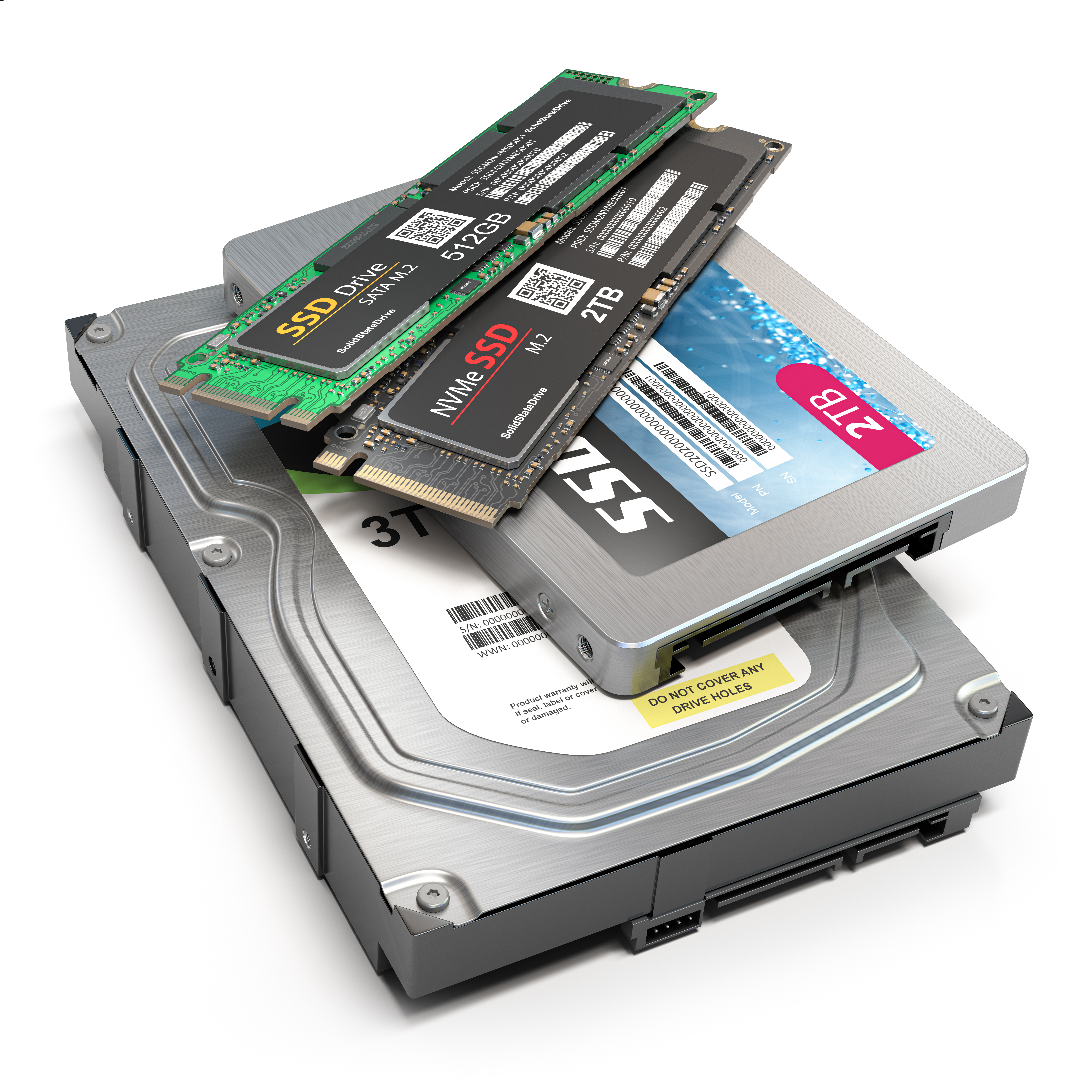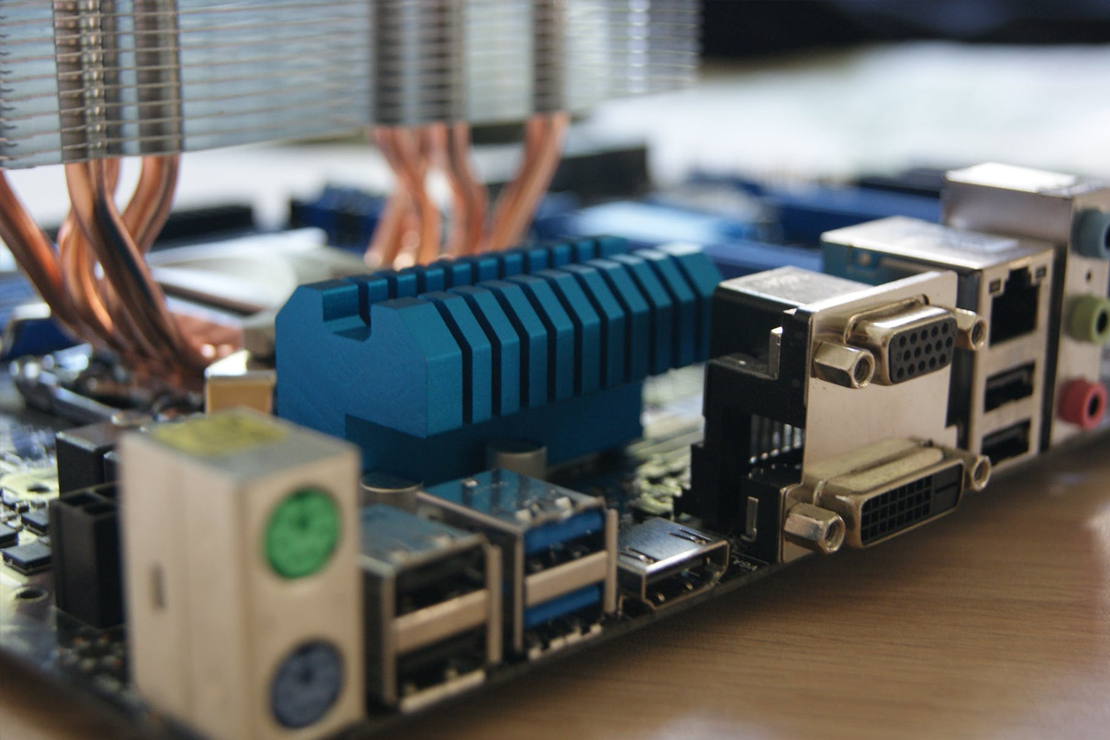SSD vs. HDD Data Recovery in Palo Alto: What’s the Difference?
Meet the passionate team at CaliPhonia, where affordable computer repairs meet expert craftsmanship. Situated in the heart of Silicon Valley, our family-owned workshop boasts over a decade of experience in cell phone and computer repairs, micro-soldering, and wireless networks. From virus and spyware removal to home and business network installations, our skilled experts offer free in-office diagnostics and delivery within a 20-mile radius. Let us breathe new life into your devices today. Contact us and experience the CaliPhonia difference.
In today’s digital era, data is as vital to your business and personal life as health is to your overall well-being. A recent USA Today article—Everything to know about cystic fibrosis and what causes it—has been making headlines by delving into the complexities of diagnosing and managing a serious health condition. Much like the comprehensive understanding required to tackle cystic fibrosis, a nuanced approach is essential when dealing with data loss.
For residents and businesses in the tech-centric environment of Palo Alto, losing critical data can be as disruptive as a sudden health emergency. This blog post is designed to guide you through the key differences between SSD and HDD data recovery. We will explore the recovery process, benefits, and key considerations to help you make informed decisions about safeguarding your digital assets. Whether you’re facing a minor glitch or a full-scale data crisis, understanding these differences is crucial to selecting the right solution for your situation.
Understanding HDD vs. SSD: The Fundamentals of Data Storage
Hard Disk Drives (HDDs)
Hard Disk Drives have been a staple in data storage for decades. HDDs function by using spinning magnetic platters to read and write data. Their mechanical nature means that while they offer large storage capacities and are generally cost-effective, they are also prone to physical damage. Mechanical components can wear down over time or become susceptible to shocks and vibrations, making them vulnerable when data loss occurs. In such instances, professional intervention through Palo Alto Hard Drive Recovery becomes essential to retrieve your precious information.
Solid State Drives (SSDs)
On the other hand, Solid State Drives store data on flash memory chips and have no moving parts. This design provides SSDs with faster performance, lower latency, and enhanced durability under normal conditions. However, the very technology that makes SSDs efficient can also complicate data recovery. Specialized software and techniques are required to address issues like firmware corruption or challenges arising from wear-leveling algorithms. Services such as Palo Alto SSD Data Recovery are tailored to handle these unique challenges, ensuring that data retrieval is both effective and safe.
Understanding the distinct architectures of HDDs and SSDs is the foundation for appreciating why their recovery methods differ so significantly. Just as cystic fibrosis requires specific diagnostic tests and treatment plans based on its genetic and physiological characteristics, each type of storage device demands a tailored recovery approach.
The Data Recovery Process: From Diagnosis to Restoration
Recovering lost data is a meticulous process that demands expertise and advanced tools. At CaliPhonia, we follow a structured approach to ensure the highest likelihood of successful data retrieval, whether you are dealing with an HDD or an SSD.
Step 1: Initial Consultation and Diagnostic Evaluation
Your data recovery journey begins with a thorough consultation. Our experts, who are recognized as Palo Alto Data Recovery Experts, conduct a comprehensive evaluation to determine the root cause of the data loss. This evaluation involves:
- Device Inspection: A detailed physical and software-based examination of your device to identify any signs of damage or malfunction.
- Data Integrity Testing: Using advanced diagnostic tools to evaluate the extent of data corruption or loss.
- Feasibility Analysis: Assessing whether the lost data can be effectively recovered using our specialized techniques.
This diagnostic phase is analogous to the medical tests used to diagnose conditions like cystic fibrosis—early and accurate detection is crucial for a successful intervention.
Step 2: Tailored Recovery Planning
Once the initial diagnosis is complete, our team develops a customized recovery plan. The plan differs significantly depending on whether the issue involves an HDD or an SSD:
- For HDDs: Our focus is on addressing physical damages such as issues with the magnetic platters or the mechanical read/write head. Techniques under File Retrieval Palo Alto may involve intricate disassembly of the drive in a controlled environment to safely extract the data.
- For SSDs: The recovery plan addresses challenges such as firmware corruption, complications from the TRIM command, and wear-leveling issues. Our specialized approach, known as Palo Alto SSD Data Recovery, employs sophisticated software algorithms and sometimes firmware adjustments to recover data effectively.
This phase is crucial because it sets the stage for the recovery process, ensuring that each device is treated with the unique approach it requires.
Step 3: Data Recovery Execution
With a tailored plan in place, the next step is the execution of the recovery process. Our expert technicians use state-of-the-art tools and methods to retrieve your lost data:
- HDD Recovery:For hard drives, the process may involve opening the device in a clean-room environment. This controlled setting allows our specialists to safely access the internal components and recover data from the magnetic platters, a process integral to Palo Alto Hard Drive Recovery.
- SSD Recovery: For solid state drives, the recovery process is predominantly software-driven. Our team works to bypass firmware restrictions and mitigate issues related to data remapping. The approach under Palo Alto SSD Data Recovery requires precision to avoid further complications during data extraction.
Throughout the execution phase, our primary goal is to minimize any additional risk to your data while maximizing recovery success.
Step 4: Post-Recovery Analysis and Data Verification
After the data is extracted, it undergoes a thorough verification process. Our technicians confirm that the recovered files are intact and free from corruption. This post-recovery analysis ensures that the data meets quality standards and is fully usable. If any issues are identified, further corrective actions are taken to repair or restore the data. This phase is essential to ensure that the recovery process yields reliable and complete results.
Step 5: Final Delivery and Preventive Recommendations
Once the data has been successfully recovered and verified, it is securely delivered back to you. Along with the restored data, our experts provide a comprehensive report detailing the recovery process. Additionally, we offer recommendations to help you prevent future data loss. These include:
- Data Backup Strategies:Guidance on setting up robust backup systems.
- Maintenance Tips: Best practices for regular maintenance to prolong the life of your storage devices.
- Security Protocols:Advice on protecting your data from future risks, aligning with top Data Loss Solutions Palo Alto strategies.
For situations that require immediate action, our Emergency Data Recovery Palo Alto services ensure a rapid response, reducing downtime and mitigating the impact of data loss.
Benefits of Professional Data Recovery Services
Choosing professional data recovery services offers numerous advantages. Here are some key benefits that illustrate why expert intervention is invaluable:
Expertise and Specialized Knowledge
Our team of Palo Alto Data Recovery Experts is equipped with the specialized skills and experience needed to handle complex data loss scenarios. Whether you are dealing with an HDD failure or an SSD malfunction, our knowledge ensures that the recovery process is both efficient and effective.
Advanced Tools and Technology
At CaliPhonia, we leverage the latest in recovery technology. Our cutting-edge tools enable us to perform File Retrieval Palo Alto and Palo Alto SSD Data Recovery with precision, increasing the likelihood of successful data restoration even in the most challenging cases.
Rapid Response and Minimal Downtime
Time is of the essence when it comes to data loss. Our Emergency Data Recovery Palo Alto services are designed to provide quick, efficient recovery solutions, reducing the amount of downtime your business or personal operations experience during a data loss crisis.
Enhanced Data Security
Security is a paramount concern during data recovery. Our protocols ensure that your data is handled with the utmost care and confidentiality. By using secure methods and adhering to strict standards, we guarantee that your information remains protected throughout the process. This commitment aligns with our Data Loss Solutions Palo Alto and Palo Alto File Restoration Services practices.
Preventive Guidance and Long-Term Support
Beyond recovering your data, our services include expert advice on how to prevent future data loss. Our support extends beyond the immediate recovery process, providing you with ongoing tips and strategies to secure your digital assets over the long term.
Considerations Before Choosing a Data Recovery Method
While professional data recovery services offer significant benefits, there are several factors to consider before proceeding:
Cost Versus Value
Data recovery can be a costly process, but the value of retrieving irreplaceable data often outweighs the expense. Investing in professional recovery services ensures that you do not lose critical information, ultimately saving you time and money in the long run.
The Need for Prompt Action
Data loss can escalate quickly. The longer you wait to address the issue, the higher the risk of permanent data loss. Prompt engagement with Data Recovery Services Palo Alto is essential to maximize the chances of successful recovery.
Understanding Your Storage Device
Knowing whether your data loss is related to an HDD or an SSD is crucial. Each type of storage device presents its own challenges. HDDs, with their mechanical parts, may require physical repairs, whereas SSDs might face firmware or software-related issues. This understanding is key to selecting the appropriate service—whether it be Palo Alto Hard Drive Recovery or Palo Alto SSD Data Recovery.
Evaluating Service Provider Expertise
Not all data recovery providers have the same level of expertise. It’s important to choose a provider with a strong track record and specialized knowledge. At CaliPhonia, our reputation as Palo Alto Data Recovery Experts is built on years of successful recoveries and client satisfaction.
Comparing SSD and HDD Data Recovery Techniques (Without a Table Format)
When comparing data recovery techniques for SSDs and HDDs, it’s clear that each requires a distinct approach due to their inherent technological differences. For HDDs, the primary concern is often physical damage. Mechanical failures, such as head crashes or platter damage, require hands-on repairs in a sterile environment. Recovery specialists may need to perform delicate disassembly and physically access the drive’s internals to extract data directly from the magnetic platters. This approach under Palo Alto Hard Drive Recovery is meticulous and demands precision to avoid further damage.
Both recovery processes share a common goal: to restore your data with minimal risk. However, the techniques, tools, and expertise required differ significantly, making it essential to engage professionals who understand the nuances of each storage type.
The Future of Data Recovery: Technology and Trends
The field of data recovery is rapidly evolving, with new technologies and methodologies constantly emerging. Here are some trends that are shaping the future:
- Enhanced Diagnostic Tools:Emerging technologies in artificial intelligence and machine learning are being integrated into diagnostic processes, allowing for faster and more accurate assessments of data loss issues.
- Cloud Integration:The increasing use of cloud storage solutions is driving the development of hybrid recovery methods. These approaches combine traditional hardware recovery with cloud-based backups to offer more comprehensive solutions under Data Loss Solutions Palo Alto.
- Improved Security Protocols:As cybersecurity threats continue to evolve, data recovery services are placing greater emphasis on data security. Future methods will likely involve enhanced encryption and robust security measures to protect your sensitive information throughout the recovery process.
- Automation and Remote Assistance: Automation in data recovery procedures and remote diagnostics are on the rise. This trend not only reduces recovery times but also minimizes the need for physical intervention, making Emergency Data Recovery Palo Alto services even more efficient and accessible.
Key Takeaways
- Distinct Storage Architectures: HDDs rely on mechanical components and are more susceptible to physical damage, while SSDs use flash memory, requiring specialized firmware and software recovery techniques.
- Customized Recovery Processes: Successful data recovery depends on a tailored approach—Palo Alto Hard Drive Recovery for HDDs and Palo Alto SSD Data Recovery for SSDs—ensuring that each device’s unique challenges are addressed.
- Expert Intervention is Crucial:Engaging professional Data Recovery Services Palo Alto quickly can greatly increase the chances of a successful recovery, minimizing further data loss.
- Technological Advancements: Innovations in diagnostic tools, cloud integration, and automation are continually improving data recovery outcomes, making future services even more reliable.
- Proactive Prevention: In addition to recovery, preventive measures such as regular backups and maintenance advice from Palo Alto Data Recovery Experts help safeguard your digital assets in the long term.
FAQs
Q1: What is the main difference between HDD and SSD data recovery? A: HDD recovery often involves physical repair techniques to address mechanical failures, while SSD recovery relies on advanced software and firmware techniques due to the absence of moving parts.
Q2: How quickly should I contact a professional after experiencing data loss?A: It is critical to act fast. The longer you use a damaged drive, the higher the risk of permanent data loss. Engaging Data Recovery Services Palo Alto immediately can greatly improve recovery success.
Q3: Can I attempt to recover data myself before contacting a professional? A: DIY attempts can further damage the drive and reduce the chances of recovery. It is best to consult with Palo Alto Data Recovery Experts who have the right tools and expertise.
Q4: What are the benefits of professional data recovery services compared to using recovery software?A: Professional services offer advanced diagnostic tools, controlled environments for physical repairs, and customized recovery plans that software solutions typically cannot provide. They also ensure data security and reduce the risk of further damage.
Q5: How do I know if my device requires HDD or SSD recovery services?A: Understanding your device’s specifications is key. If your device is an HDD, physical damage might be the issue, whereas an SSD may have firmware or flash memory challenges. Professional diagnostics by Data Recovery Services Palo Alto will determine the correct approach.
Conclusion
Data loss can disrupt both personal and business operations as significantly as a sudden health crisis can impact overall well-being. Understanding the critical differences between HDD and SSD data recovery is essential for selecting the right solution to restore your valuable information. Whether you require Palo Alto Hard Drive Recovery for mechanical failures or Palo Alto SSD Data Recovery for flash memory issues, expert intervention can make all the difference.
At CaliPhonia – Phone & Computer Repair, we are committed to delivering top-notch Data Recovery Services Palo Alto with a focus on precision, speed, and security. Our team of Palo Alto Data Recovery Experts is here to support you every step of the way, ensuring that your data is recovered and your systems are protected from future risks. By leveraging advanced techniques and proactive prevention strategies, we help you secure your digital future with confidence.
Disclaimer: This blog post is provided for informational purposes only and is not a substitute for professional data recovery advice. Please consult a qualified specialist for guidance on your specific data loss situation.
Remember: Your digital data is invaluable. Whether you're dealing with HDD or SSD issues, prompt expert intervention is key. Trust professional Palo Alto recovery services to restore and protect your essential information.




